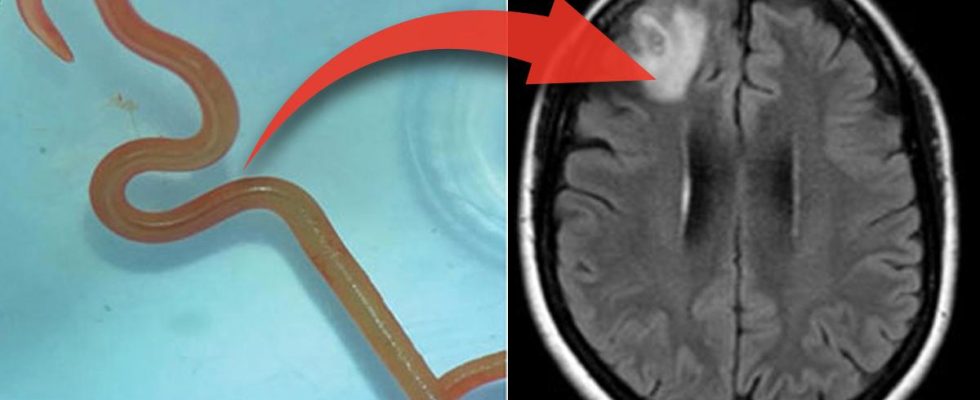For several months, the Australian woman felt unwell and sought care without receiving a diagnosis.
When the doctors finally operated, they realized that it was an unwelcome guest in the 64-year-old’s brain that caused the mysterious ailments.
Specifically, an eight centimeter parasitic roundworm – commonly found in pythons, The Guardian reports.
Quick version
ⓘ The summary is made with the support of AI tools from OpenAI and quality assured by Aftonbladet. Read our AI policy here.
Show more
– Oh my God. It’s alive and squirming, neurosurgeon Hari Priya Bandi told her colleague after she made the horrifying discovery.
Prior to that, the 64-year-old Australian woman from southeastern New South Wales had been admitted to a local hospital in late January 2021.
She then describes that for three weeks she suffered from symptoms such as headaches, diarrhea and night sweats.
But the doctors could not make a diagnosis and sent the woman home again, reports say The Guardian.
Seeking care for memory loss
In 2022, the woman again sought medical attention after she added memory loss and depression to the list of symptoms.
She was then sent on to Canberra Hospital in the capital – where, after an examination with a magnetic camera, they decided to operate on the woman’s brain.
During the operation, neurosurgeon Priya Bandi discovered the eight-centimeter-long roundworm that was living in the woman’s brain and removed it.
The roundworm after it has been operated out of the woman’s brain. First patient in the world
The hospital put together a team whose task was to find out what type of mask it was, in order to give the woman the best possible aftercare.
– We started reading in the textbooks and looked for all kinds of round masks that can cause neurological invasion and disease, says infectious disease doctor Sanjaya Senanayake, who was part of the team, to the newspaper.
Finally, the doctors gave up and sent the live worm to a laboratory belonging to the government’s national science agency, CSIRO.
“The CSIRO scientist just looked at it and said, ‘Oh my God, this is Ophidascaris robertsi,'” says Senanayake.
Doctors’ theory: Grass
Ophidascaris robertsi is a parasitic roundworm that usually lives in carpet pythons. The woman’s case is thus unique in the world.
-Poor woman. You don’t want to be the first patient in the world to be invaded by a roundworm found in pythons. She has been very strong. Really, hats off to her,” says Senanayake.
It is unclear how the woman was invaded by the roundworm.
The doctors’ theory is that the woman fell ill after she picked grass in a lake area near where she lives.
Python worms should also live there – and one of these may have dropped the roundworm in the grass via its faeces, according to the theory.
The woman may then have ingested roundworm eggs by touching the grass or by eating vegetables that she harvested in the area.
The 64-year-old is now on the road to recovery, but is checked at regular intervals by doctors.
30 new infections in the last 30 years
According to the US National Public Health Authority, 75 percent of new or emerging infectious diseases in humans come from animals, writes The Guardian.
The infectious disease doctor Senanayake, who cared for the woman, believes that the world-unique case highlights a major problem – that the habitats of humans and animals overlap with each other more and more.
– There have been around 30 new infections in the world in the last 30 years, he says.
“Not like Covid-19 or Ebola”
Of the new infections, approximately 75 percent are zoonotic, which means that the transmission took place from the animal world to the human world – for example, like the coronavirus.
But this time humanity is not facing a new pandemic, says Senanayake.
– This Ophidascaris infection is not transmitted between humans. So this patient’s case will not cause a pandemic like Covid-19 or Ebola, he says, continuing:
– But the snake and the parasite are found in other parts of the world, so it is likely that more cases will be discovered in the coming years in other countries, says Senanayake.
